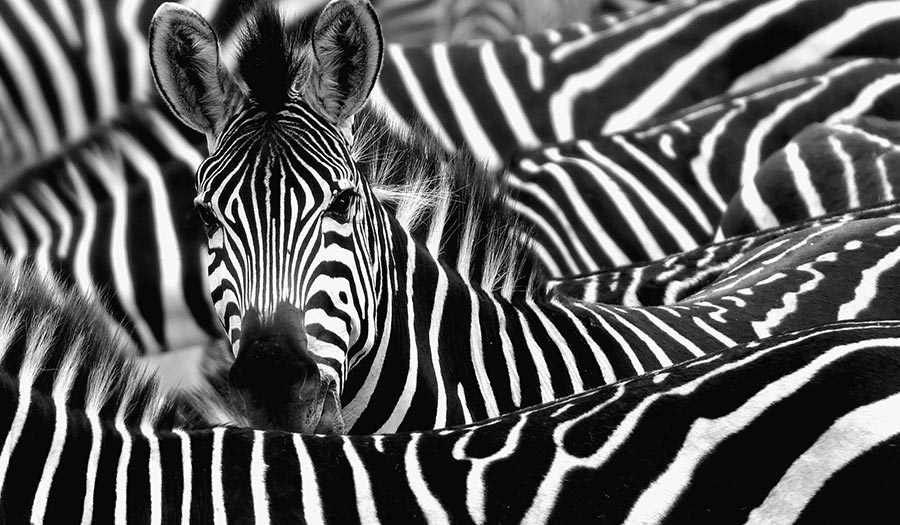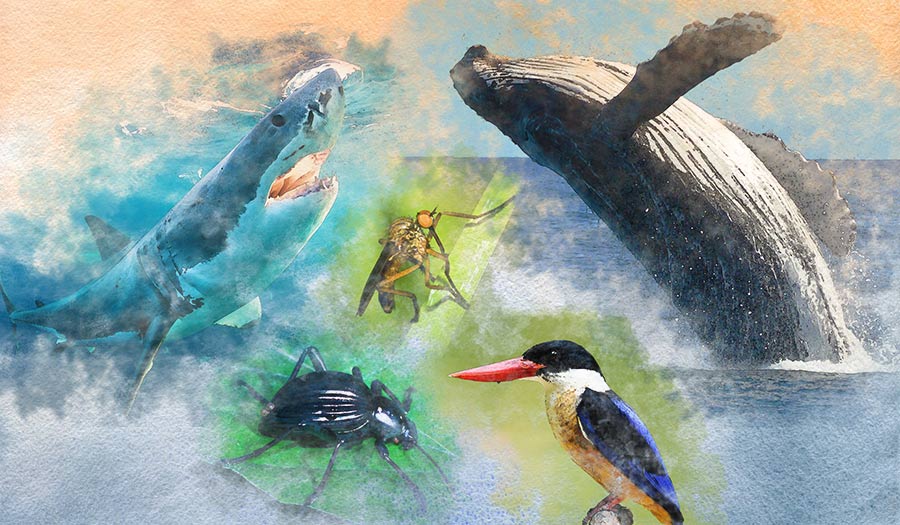 Getty Images
Getty Images
World News Desk
Learn the why behind the headlines.
Subscribe to the Real Truth for FREE news and analysis.
Subscribe NowZebra stripes are dazzling—particularly to flies.
That is the conclusion of scientists from the University of Bristol and the University of California at Davis who dressed horses in black-and-white striped coats to help determine why zebras have stripes.
Zebra stripes have been posited to provide camouflage, visually confuse predators, signal to other zebras, or help control heat gain, but none of these hypotheses have withstood rigorous experimentation.
In the new study, the authors compared behavior of horse flies as they attempted to prey on zebras and uniformly colored horses held in similar enclosures. Flies circled and touched horses and zebras at similar rates, but actually landed on zebras less than one-quarter as often. When horses wore a striped, black or white coat, flies landed far less often on the striped coat, but just as often on the uncovered head. The authors found that while flies decelerated prior to landing on horses, they approached zebras at a faster clip and failed to slow down as they closed the distance, often bumping into the zebra before flying away again.
Additionally, zebras were at greater pains to keep flies off through tail swishing and running away.
Taken together, these results indicate that stripes do not deter flies from approaching zebras, but do prevent effective landing, and thus, reduce the number of flies successfully feeding. This finding provides further support for the hypothesis that the benefit of zebra stripes is to reduce biting by predatory flies.
Martin How, a research fellow at University of Bristol and expert on animal vision, told The Associated Press there are reasons to be “quite excited” about the research, which he said helps scientists understand what is happening in the mind of a fly.
The insights have broader implications for technology such as driverless cars, which are inspired by insect vision. If stripes disrupt a fly, they might also disrupt a driverless car’s systems, according to Dr. How.
“What we needed to do is get our mind into the eye of the fly,” Dr. How said. “They have very different eyes from us.”
There are also human applications for zebra stripes. Dr. How says from now on, he is wearing stripes while riding his bicycle during horse-fly season.
Tim Caro, a professor in the U.C. Davis Department of Wildlife, Fish and Conservation Biology, hopes the study will underscore the wonders that remain to be discovered in the natural world.
“If we can try to pique the public’s appreciation of the wonders of nature, they’ll be less cavalier about destroying it,” he said. “That's my hope.”
Zebras and flies are only one example of scientists looking to the natural world to solve problems and improve our lives. Implementing biomimicry not only yields astounding results, it reveals something incredible about our natural world.
Read Copying the Genius in Nature – What Biomimicry Reveals.
This report contains information from The Associated Press.
- Real Truth Magazine Articles
- SCIENCE & TECHNOLOGY
 Copying the Genius in Nature – What Biomimicry Reveals
Copying the Genius in Nature – What Biomimicry Reveals
More on Related Topics:
- Australia’s Social Media Ban for Children Takes Effect in World First
- Deepfakes: Is Seeing Still Believing?
- Ukraine’s ‘Sea Baby’ Drones Are Growing Up with Longer Range, Bigger Payload
- How North Korean Hackers Are Using Fake Job Offers to Steal Cryptocurrency
- Creation vs. Evolution: Rising Above the Debate


